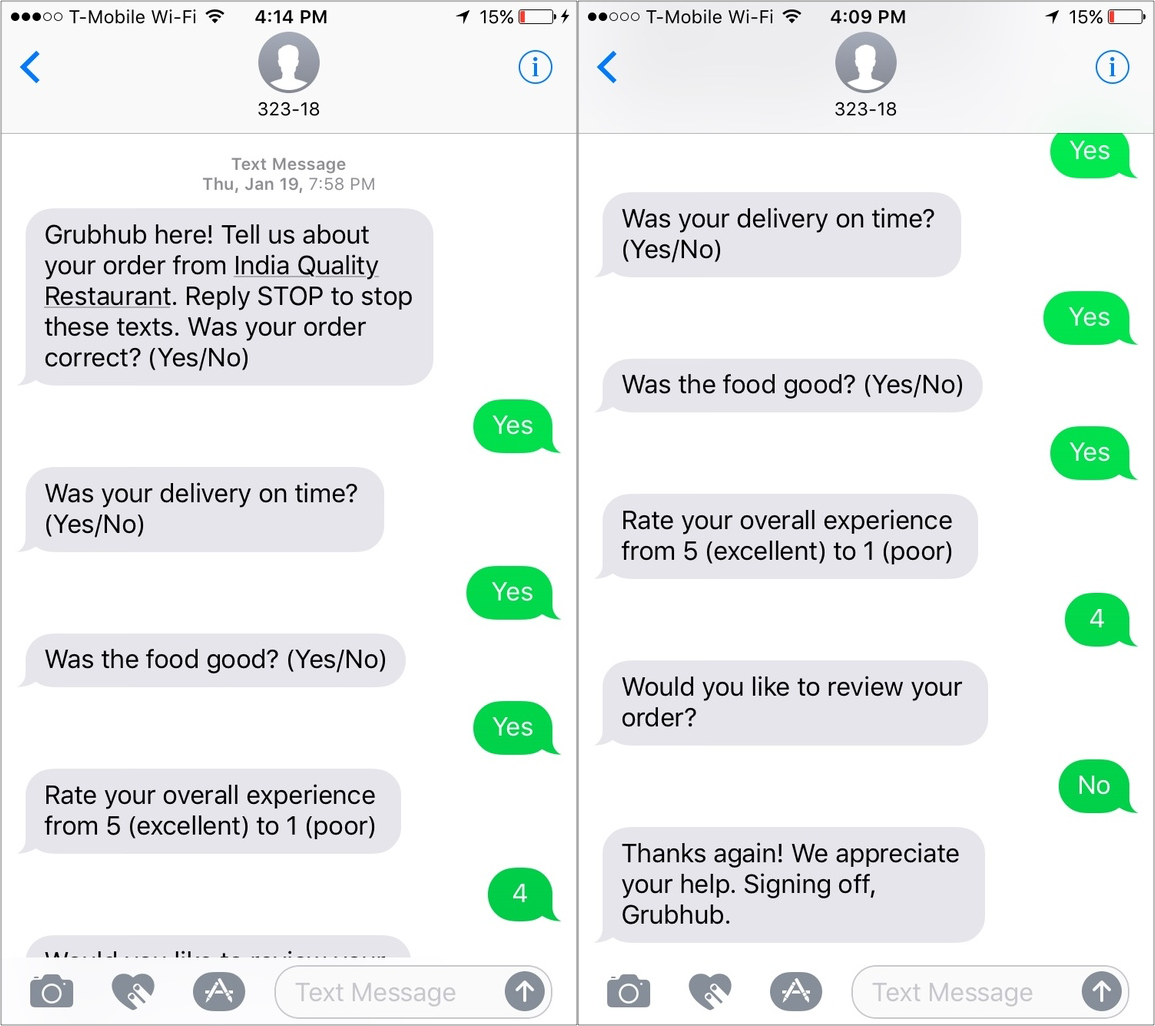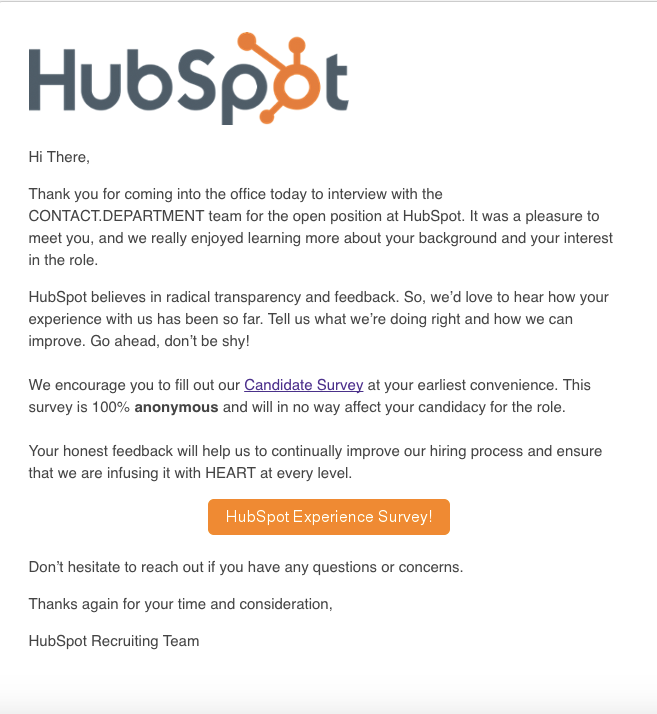How Takeout Improved Our Candidate Experience: A HubSpot Experiment. The objective, then, was to get a higher volume and quality of feedback that could enable us to even better improve the recruiting experience. The Experiment The Candidate NPS Survey Today: Email When candidates globally have a face-to-face interview with HubSpot, they receive an automated email at 7:00 PM that evening with a link to take a short survey with three questions: On a scale of 1-10, how likely are you to recommend HubSpot to a friend based on your experience? Once the technology was up and running, here's how it worked: Collect Phone Numbers. Our recruiting coordinators added candidates' mobile phone numbers to a shared Google spreadsheet by 4:00 PM daily, with information like the candidate's full name, date of her face-to-face interview, and the department she interviewed with. I then imported that information into Textit.in, and set up a workflow to have that group of contacts receive the mobile feedback survey via text at 7:00 PM on the evening of their respective interviews. Collect results. Results As predicted, the volume of responses to the mobile surveys outnumbered those from email considerably. Next Steps and Takeaways Across the board, the mobile results indicate an improved follow-up experience for candidates -- and that candidates are more likely to give us feedback via mobile. And based on these positive results from the experiment, we know there's a place for mobile in our recruiting process ... and that there could be in yours, too.


So read on — and find out how takeout inspired our approach to recruiting and interviewing.
How Takeout Improved Our Candidate Experience
The Hypothesis
We all know that texting for business is nothing new. You might get a text message when you pay your wireless, make a hair appointment, or confirm a time slot at the dentist. But texting hasn’t played a role in HubSpot’s recruiting and hiring process since its earliest days, when developer recruiting was essentially managed on one VP’s smart phone.
Eleven years later, whether or not a candidate receives or accepts an offer to work at HubSpot at the end of her interview process, we want her to enjoy their time with us. That experience has a big impact on whether or not candidates advocate for HubSpot in the future, the Glassdoor reviews they leave, and the likelihood that they refer friends or pursue future opportunities with us. That’s why we ask for feedback — so we can learn how we can improve. And until recently, we used what we called a Net Promoter Score survey (NPS), that was distributed via email.
But when you consider that, today, people spend more time browsing on mobile than they do on desktop, we couldn’t help but wonder if following up with candidates via text, instead of emailing them for feedback, would make it that much easier and engaging for them to actually respond.
So, we came up with a bit of a unique hypothesis: If our candidate NPS survey was more like Grubhub’s, and the survey was sent via mobile instead of email, response rates would increase. The objective, then, was to get a higher volume and quality of feedback that could enable us to even better improve the recruiting experience.
The Experiment
The Candidate NPS Survey Today: Email
When candidates globally have a face-to-face interview with HubSpot, they receive an automated email at 7:00 PM that evening with a link to take a short survey with three questions:
- On a scale of 1-10, how likely are you to recommend HubSpot to a friend based on your experience?
- Which department did you interview with?
- Anything else you’d like to share with us?

From there, my colleague Danielle McLellan analyzes the results and synthesizes the feedback, so the recruiting team has some tangible insights into what is (not) working well.
For context, the response rate to date on the email survey hovers around 55%.
The Introduction of Mobile
There was just one hiccup with implementing my mobile survey distribution idea: I’m not mobile development savvy, so executing an automated text survey was pretty foreign. But, I could still perform research with the best of ’em, so I gathered some information on mobile survey vendors, and chatted with HubSpot’s developer team about the feasibility of two options:
- Buying the tech to create this feedback system.
- Building that tech internally for the same purpose.
We ended up going with a scrappy, but reliable, solution that combined two platforms: Textit.in + Twilio.
Textit.in is a mobile…

COMMENTS